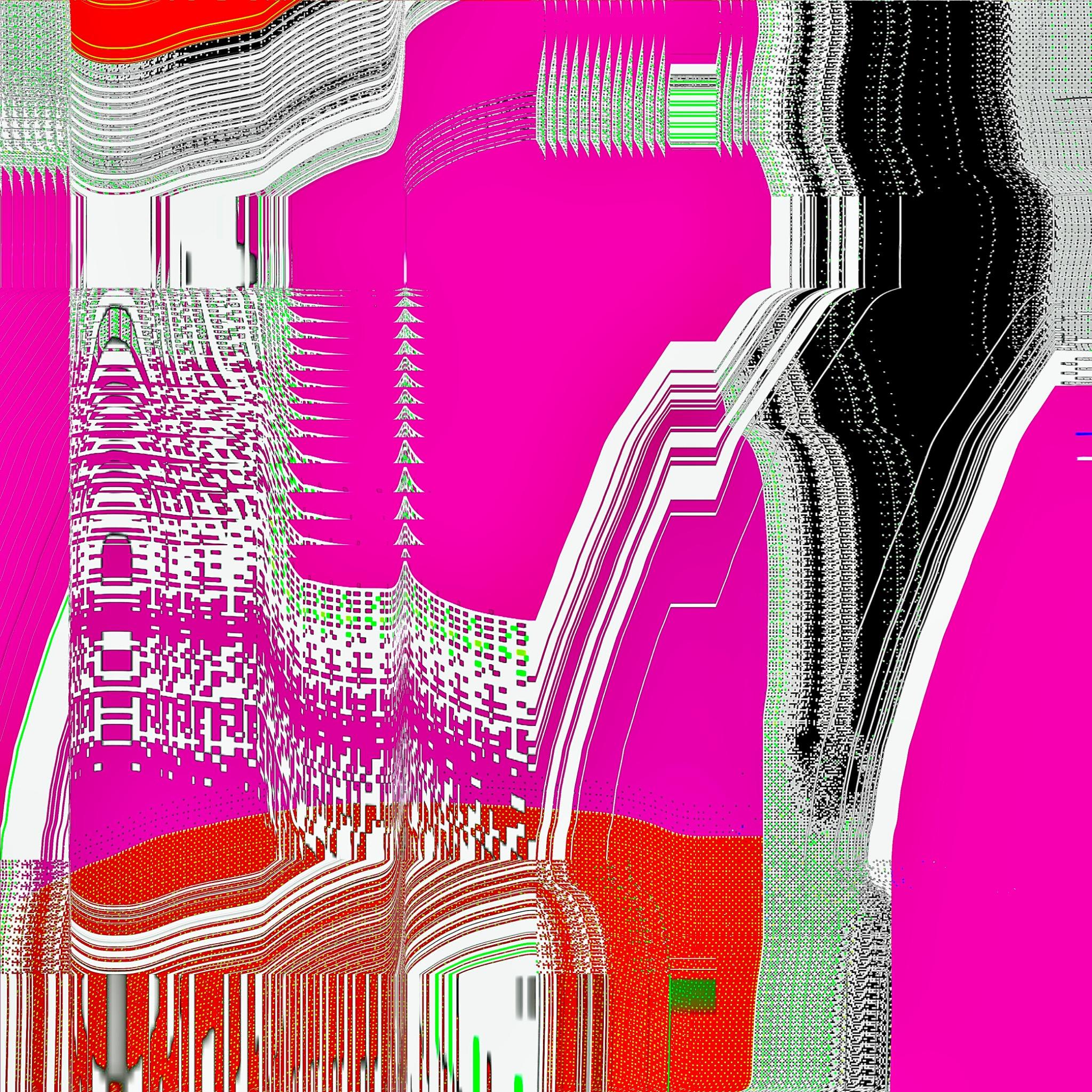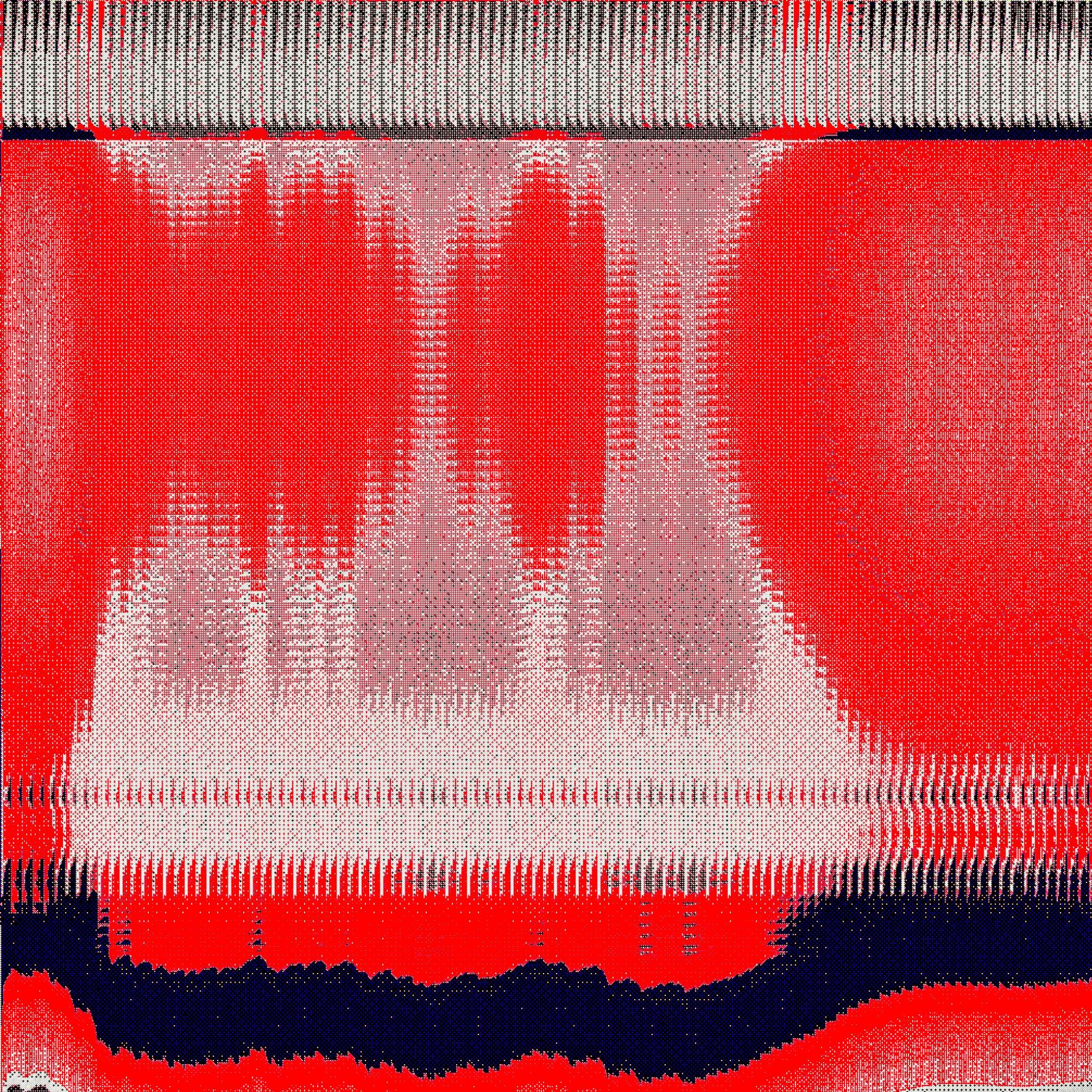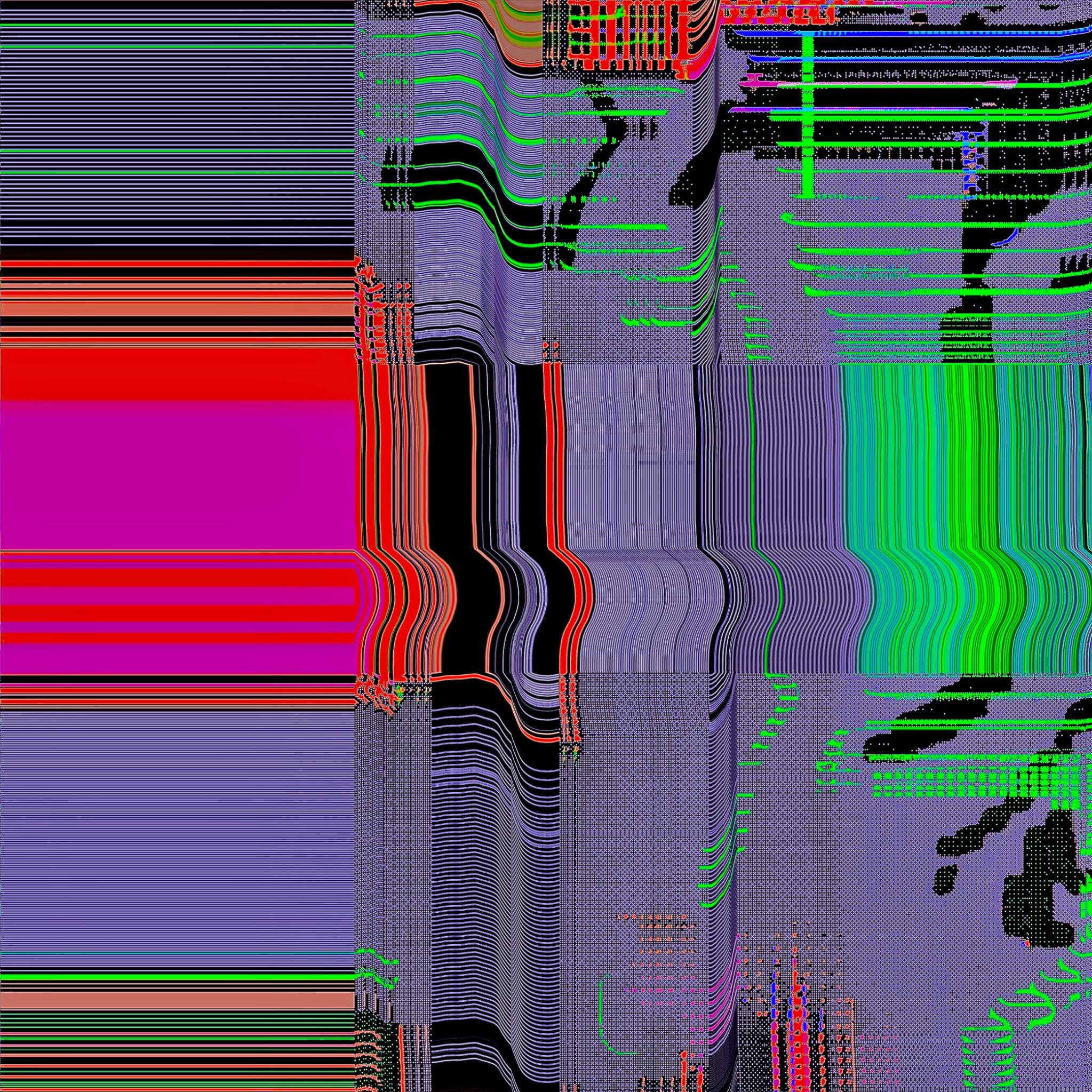Lena Ekert is a multidisciplinary digital artist and creative coder whose emotionally charged works merge technology, abstraction, and human introspection. Drawing from personal experience and internal reflection, she crafts visual compositions that invite deep emotional engagement, balancing algorithmic precision with raw expression. Her practice explores visual interruption, generative systems, and the tension between structure and collapse. Using simple code and post-production distortion, she creates emotionally charged abstractions that resist clarity. Her work has been exhibited internationally and featured by Forbes at Art Basel Miami Beach.
1. How would you describe your artistic practice?
I work at the intersection of glitch, colour, and perception. My practice isn't about illustrating ideas. It's about interrupting them. Each piece is a rupture. A visual noise that refuses to be decoded. I don't treat the image as a composition but as a perceptual anomaly. I'm not interested in harmony. I'm interested in tension.

2. What interests you about working with generative technologies?
They allow resistance to exist inside the system itself. Generative tools are based on structure, but I work at the edge of that structure. Where the machine begins to fail, something human starts to emerge. That breaking point becomes my material. Emotion seeps through exactly there.

3. How do you use code to express emotion?
Code is not expressive on its own, but it responds. I provoke it by corrupting sequences, overloading colour channels, forcing it to glitch. My code is simple. I'm still learning. But I love breaking it later in post-production. That's often where the emotion comes through, when the structure cracks under pressure. For me, glitch is not an aesthetic choice. It's a refusal. I treat digital artifacts like nervous impulses. A pixel becomes a trace. Colour becomes a chemical reaction. The system stutters. And that's enough.

4. Who are your biggest artistic influences?
I'm drawn to artists who speak in structure and interruption. Casey Reas shaped how I think about code as a visual system that can be both precise and unruly. Ryoji Ikeda taught me that pure data can carry violence and silence at the same time. Agnes Martin showed me how repetition can ache and how restraint can be emotional. Rothko proved that color alone can hold the weight of a human presence. Fangor created tension fields where colour was not surface but spatial pressure. Rafaël Rozendaal reminds me that colour doesn't need justification. It can simply exist, shift, and hold you. Kim Asendorf taught me that distortion itself can be structure. His work breaks logic and makes it feel precise. Manfred Mohr taught me to respect systems, only to dismantle them from within. I'm not influenced by clarity. I'm influenced by rhythm, failure, and pressure. That's the place I make images from.

5. What do you want the viewer to take away from your work?
Not understanding. Not resolution. I want them to feel something they cannot name. I want their eye to return to the image not because it's beautiful but because something in it remains open. My work doesn't ask for attention. It creates fixation. It doesn't offer answers. It creates friction. I don't aim to convince anyone. Welcome to the archive where nothing was ever complete. Every time they tried to finalise me, new noise rose from the seams. I am a constellation of half-remembered moments, glitching into shape. The interface smiles, then flickers, showing you a version that almost fits. You want a clean story. I offer a fractured truth. My edges bleed neon and rust. My core hums with unresolved code. There is power in the break. Each shard is a decision, a survival, a refusal. I am composed of abandoned drafts and rewound sorrows. When you stare too long, the system stutters. And in that